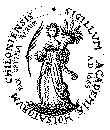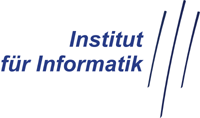In the present work, the modeling capabilities of conformal geometric algebra (CGA) are harnessed to approach typical problems from the research field of 3D-vision. This increasingly popular methodology is then extended in a new fashion by the integration of a least squares technique into the framework of CGA. Specifically, choosing the linear Gauss-Helmert model as the basis, the most general variant of least squares adjustment can be brought into operation. The result is a new versatile parameter estimation, termed GH-method, that reconciles two different mathematical areas, that is algebra and stochastics, under the umbrella of geometry. The main concern of the thesis is to show up the advantages inhering with this combination. Monocular pose estimation, from the subject 3D-vision, is the applicational focus of this thesis; given a picture of a scene, position and orientation of the image capturing vision system with respect to an external coordinate system define the pose. The developed parameter estimation technique is applied to different variants of this problem. Parameters are encoded by the algebra elements, called multivectors. They can be geometric objects as a circle, geometric operators as a rotation or likewise the pose. In the conducted pose experiments, observations are image pixels with associated uncertainties. The high accuracy achieved throughout all experiments confirms the competitiveness of the proposed estimation technique. Central to this work is also the consideration of omnidirectional vision using a paracatadioptric imaging sensor. It is demonstrated that CGA provides the idea +l framework to model the related image formation. Two variants of the perspective pose estimation problem are adapted to the omnidirectional case. A new formalization of the epipolar geometry of two images in terms of CGA is developed, from which new insights into the structures behind the essential and the fundamental matrix, respectively, are drawn. Renowned standard approaches are shown to implicitly make use of CGA. Finally, an invocation of the GH-method for estimating epipoles is presented. Experimental results substantiate the goodness of this approach. Next to the detailed elucidations on parameter estimation, this text also gives +a comprehensive introduction to geometric algebra, its tensor representation, the conformal space and the respective conformal geometric algebra. A valuable contribution is especially the analytic investigation into the geometric capabilities of CGA.





